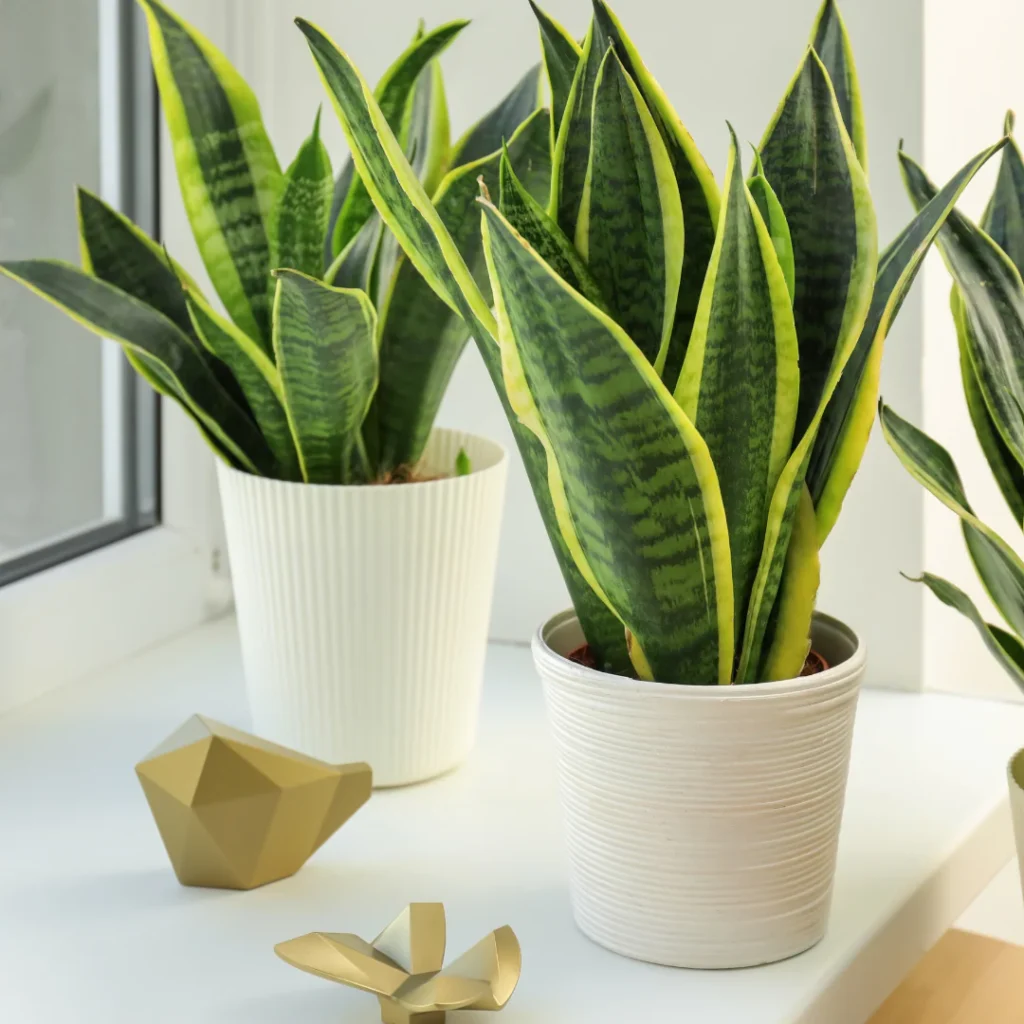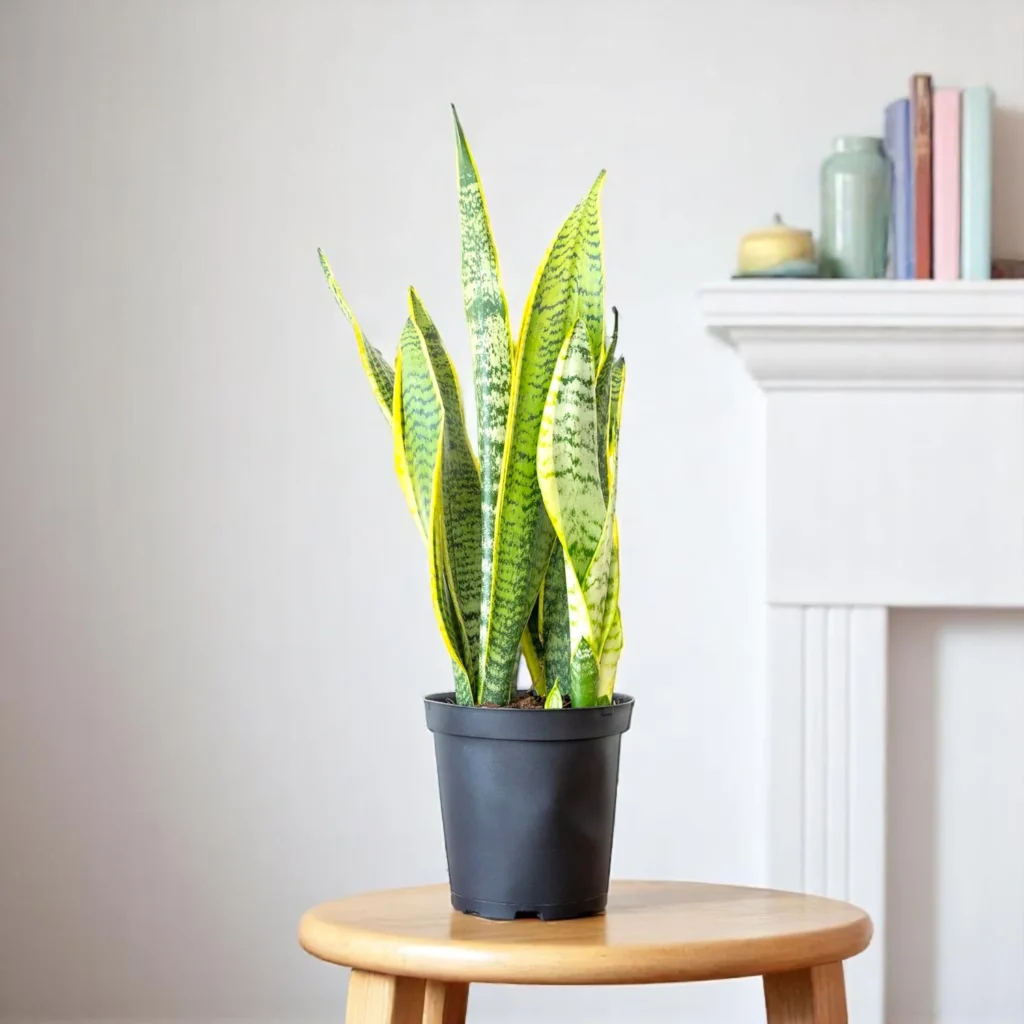If you’re new to indoor gardening and looking for a plant that’s nearly impossible to kill, the snake plant (Sansevieria trifasciata), also known as mother-in-law’s tongue, is one of the best choices. This hardy houseplant is not only visually striking with its tall, upright leaves but also well-known for purifying the air and thriving with minimal attention.
Whether you’re a first-time plant parent or simply want to ensure your snake plant grows beautifully, this guide will walk you through everything you need to know about snake plant care the right way.
Introduction to Snake Plants

Snake plants are native to West Africa and have adapted to thrive in tough conditions. They store water in their thick, sword-like leaves, making them drought-tolerant and resilient to neglect. Unlike many houseplants, snake plants are forgiving of low light, infrequent watering, and changes in environment, which makes them perfect for beginners.
Besides being low-maintenance, snake plants also hold symbolic meaning. In Feng Shui, they are believed to bring luck, prosperity, and protection when placed in the right area of the home.
Benefits of Having Snake Plants at Home
Before diving into care, here are a few reasons why snake plants are so popular:
- Air Purification – NASA’s Clean Air Study listed snake plants as effective at filtering indoor air by removing toxins like formaldehyde and benzene.
- Low Maintenance – Perfect for people with busy schedules or little gardening experience.
- Adaptability – Can survive in low light and thrive in bright, indirect sunlight.
- Aesthetic Appeal – Their architectural look adds a modern, elegant touch to any space.
- Oxygen Boost – Snake plants continue releasing oxygen at night, making them ideal bedroom plants for improving sleep quality.
Step-by-Step Guide to Caring for Snake Plants

1. Choosing the Right Pot and Soil
- Pot Selection: Always choose a pot with drainage holes. Snake plants dislike standing water and are prone to root rot if overwatered.
- Soil Type: Use a well-draining soil mix. A succulent or cactus mix works perfectly, or you can create your own blend using potting soil, sand, and perlite.
Tip: Avoid heavy, moisture-retaining soils. The looser the soil, the happier your plant will be.
2. Light Requirements
Snake plants are versatile when it comes to light:
- Best Conditions: Bright, indirect light near a window.
- Can Tolerate: Low-light corners or offices with artificial lighting.
- Avoid: Direct harsh sunlight for extended hours, as this can scorch their leaves.
Tip: Rotate your plant every few weeks to ensure even growth and prevent leaning.
3. Watering Snake Plants
Overwatering is the most common mistake new snake plant owners make.
- Frequency: Water once every 2–4 weeks, depending on the season. In summer, they may need more frequent watering, while in winter, once a month is usually enough.
- How to Water: Let the soil dry out completely between waterings. When watering, soak the soil thoroughly and allow excess water to drain away.
- Signs of Overwatering: Yellow, mushy leaves and root rot.
- Signs of Underwatering: Wrinkled or curling leaves.
Golden Rule: When in doubt, it’s better to underwater than overwater a snake plant.
4. Temperature and Humidity
Snake plants thrive in typical indoor environments:
- Temperature Range: 60–85°F (15–29°C).
- Avoid: Extreme cold below 50°F (10°C). Snake plants are not frost-tolerant.
- Humidity: Average household humidity is fine. They can handle both dry and moderately humid air.
Tip: Keep them away from drafty windows, air conditioners, or heating vents.
5. Fertilizing for Growth

While snake plants don’t need much fertilizer, a little boost helps them grow healthier.
- When: Feed once a month during the growing season (spring and summer).
- Type of Fertilizer: A balanced liquid fertilizer diluted to half strength works best.
- Avoid: Fertilizing in winter, as the plant is dormant and won’t need extra nutrients.
6. Pruning and Cleaning
Snake plants are slow growers, but occasional maintenance helps them look their best.
- Pruning: Remove damaged, yellow, or dead leaves by cutting them at the base.
- Cleaning: Wipe leaves gently with a damp cloth to remove dust and keep them shiny.
- Trimming: If leaves grow too tall, you can cut them back without harming the plant.
Tip: Always use clean, sharp scissors to avoid damaging the leaves.
7. Repotting Snake Plants
Snake plants prefer being slightly root-bound, so they don’t need frequent repotting.
- When to Repot: Every 2–3 years or when roots start pushing out of the pot.
- How to Repot:
- Choose a pot one size larger.
- Use fresh, well-draining soil.
- Carefully separate crowded clumps if you want to propagate.
Propagating Snake Plants

One exciting aspect of snake plants is how easy they are to multiply. Propagation gives you more plants to decorate your home or gift to friends.
- Leaf Cuttings in Soil: Cut a healthy leaf, let it dry for a day, then plant in soil.
- Leaf Cuttings in Water: Place a cut leaf in water until roots develop, then transfer to soil.
- Division Method: Separate root clumps when repotting to create new plants instantly.
Common Problems and Solutions

Even though snake plants are tough, they may face some issues:
- Yellow or Mushy Leaves: Overwatering → Reduce frequency and check roots.
- Brown Tips: Low humidity, inconsistent watering, or exposure to drafts.
- Pests: Rare, but mealybugs or spider mites can appear. Wipe leaves with insecticidal soap.
- Slow Growth: Normal during winter. Increase light and fertilize lightly in spring.
Snake Plants and Feng Shui
Snake plants are often linked with good fortune and protection in Feng Shui. When placed in the right spots, they’re believed to attract positive energy.
- Best Locations:
- Near entryways to guard against negative energy.
- In the office for focus and productivity.
- In the bedroom for oxygen boost at night.
Tip: Avoid placing them directly in the center of the home, as sharp upward leaves are thought to create tension in that position.
Final Thoughts
Caring for a snake plant is one of the easiest and most rewarding gardening experiences, especially for beginners. With just the basics—well-draining soil, occasional watering, and the right amount of light—your snake plant will thrive for years.
Not only will this plant beautify your space with its bold, upright leaves, but it will also purify your air, improve your sleep, and bring a sense of calm and prosperity to your home.
If you’re just starting your indoor gardening journey, the snake plant truly is the perfect companion—low maintenance, resilient, and full of benefits.





